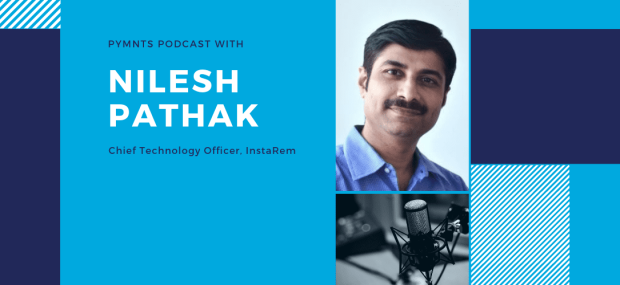Why Trust Is The Super Glue To Making Cross-Border Payments Work

Trust is important for all of payment, commerce and financial services – it is more or less the glue that holds transactions together. Without foundations of trust, no transaction can get off the runway.
And when it comes to cross-border transactions, that importance increases exponentially, simply by the nature of that activity. The parties don’t know each other, and are often separated by language and time zone barriers that can make communication a tremendous challenge.
That is the big challenge for cross-border payments experts, InstaReM CTO Nilesh Pathak told Karen Webster in a recent PYMNTS interview – overcoming those barriers to trust that serve as friction points when partners are trading across borders. The good news, however, is that for the first time, simultaneous advances in authentication, validation and payments worldwide are changing the way cross-border transactions are happening. The technology, he noted, is starting to get ahead of the problem and neutralize the pain points.
“In emerging markets where we’re heavily invested – India is a good example – we’re seeing all kinds of emerging best practices around data privacy, security and authentication, and at the same time the whole real-time payment network is being upgraded,” Pathak said. “That’s making it easier to use API integrations to make payments faster, more transparent and also more compliant.”
The Big Barriers to Cross-Border Trust, and How to Overcome Them
In stepping back to view the cross-border transactional ecosystem as a whole, Pathak told Webster, the major areas of friction can basically be broken down into three areas.
The first is the risk and compliance bucket, ensuring practices are aligned with the governing regulatory model, including making sure everyone is who they say they are – on both sides of the transaction. The larger one’s scale is, the more local compliance checks and vagaries one is responsible for managing.
The second bucket, Pathak said, is all about velocity – the speed at which the payments can be successfully delivered over the network.
The third bucket, he noted, is the transparency bucket, or cost. Because of various fees and fluctuating currency values, knowing exactly how much a transaction will cost is an ever-recurring issue in global payments.
These areas, Pathak explained, are the major issues causing most cross-border friction – though the barriers between them are porous, as issues in one area tend to create and exacerbate issues in the others.
“The recurring issue that connects all three of these things is you don’t want to have an offline process to carry out the due diligence or verify the partners in the transaction,” he said. “That is where technology solutions come into play – when you can innovate on verification and improve friction points across the board.”
That starts with establishing trust between the parties in the transaction, and being able to confidently assert that everyone can be verified in a very short amount of time. For InstaReM, that means tapping into things like India’s central identity services and other identification databases that by their nature supply a “strong automatic level of trust,” according to Pathak.
The firm also connects – via API – to various independently certified online databases “that have some kind of built-in credibility.” Taking that data access, and combining it with machine learning-backed analysis, enables InstaReM to quickly and effectively establish that the parties in play are legitimate.
“In a lot of emerging economies, there are offline processes in validation – and they are always slow,” Pathak said. “It is tough to carry out cross-border trade where there are a lot of offline processes, but we have seen a tremendous amount of progress on API integration and the ability to perform authentication checks more quickly.”
It’s a strong start, he said, but there is a lot more progress still to be made.
Pushing Past Old Limits
As of today, Pathak told Webster, once InstaReM receives credit from a buyer for a supplier that can immediately verify who they are, it can leverage its global network to almost immediately inform the supplier in another country that a deposit has been posted, and who it came from.
“Straightaway, we can dispatch a message on the other side to the receiver country that the money has been collected and is now ready for use,” he noted.
Can the user collect those funds, though? That still depends on the market. In places where Instant Payments is up and running, the receiver can receive their funds almost immediately. And, Pathak told Webster, where InstaReM can partner to make those kinds of instant transfers possible, it does so.
In some markets, the firm is reliant on the local ACH system. The good news, he said, is that it’s very likely the payment will still be made on the same day, if not instantly. But in some markets, it might require a day’s wait until funds are available.
An improvement, to be certain, but an indication that there are still many miles to go in bringing the whole of cross-border payments, end-to-end, up to digital speed.
